Ingredients
For 4 portions
The Veg
- 2 Pak Choi
- 2 Carrots
- 1 Zucchini
- 1 Mango (or 3 Nectarines)
The Meat (or not)
- 2 Chicken breasts (or Tofu)
The Spice + Other
- 1 big white Onion / 2 cloves of Garlic / 1.5 cm Fresh Ginger / 1-2 Pepperoncini
- 2 heaped teaspoons Curry Powder / 3-5 tablespoons Soy Sauce / 2 teaspoons of Honey
- 1 bunch of Coriander
- 500 ml Coconutmilk
- Pepperoncini – for topping
- Pickled Ginger – for topping
- Misobroth
- Glass noodles
Intro
I hope you are well during this interesting time and I also hope that I can give you a bit of lift with one of my favourite recipes. This dish allows you to create deep flavour in a very short amount of time and is really easy because you can substitute different things according to your own taste.
But lets start off with a bit of history to this dish: It developed over time with me trying to make a type of Thai Curry or at least play around with the flavours that it should contain. The reason why I started doing that is because I wanted to incorporate Pak Choi into a recipe. This is quite a few years ago and Pak Choi was completely new to me, but I wanted to bring together the fresh and subtle flavours of the Pak Choi with a rich sauce.
When I found out a couple years ago, that Pak Choi is also grown in Switzerland it made me even happier. It is in season from April until November, so keep an eye out when you make your next quarantine shop!
The Veg
Pak Choi – adds a light and slightly acidic flavour as well as crunch
Carrot – also adds a bit of crunch to the soup
Zucchini – adds a softer vegetable
Mango – adds wonderful sweetness (can be substituted with nectarine if you want to shop for local ingredients)
The Meat (or not)
Chicken – usually I will cook this meal with chicken, but when I want to eat vegetarian I will use tofu instead and it is also very tasty. Because tofu tends to be softer I usually fry it separately and add it at the end.
The Spice and Other
Onion / Garlic / Fresh Ginger / Pepperoncini – These three are somewhat the foundation of the dish
Curry Powder / Soy Sauce / Honey – mainly for for marinating the chicken
Coconutmilk – the main liquid in the sauce
Misobroth – the other main liquid in the sauce
Glass noodles – boiled in miso broth (you can use other noodles or rice if you prefer)
Coriander – for garnish and cooking only at the end
Pepperoncini – always add a little extra fresh on top
Pickled Ginger – extra garnish
Prep
- Chop the chicken and mango into bite-size pieces and add curry powder, soy sauce and honey. Mix and leave to marinate.
- Chop carrot, zucchini and set aside.
- Chop onion, garlic, fresh ginger and pepperoncini and set aside.
- Chop Pak Choi and set aside.
Cooking
- Set a pan of water on to boil and add carrot, zucchini.
- In a separate pan heat up oil to a high temperature and then add the marinated chicken to fry.
- Once the chicken is nice from the outside add onion, garlic, fresh ginger and pepperoncini.
- Take carrot and zucchini out of the water before they go soft, but make sure to keep the water.
- Add miso broth to the water and boil glass noodles to instructions in it. Then take the glass noodles out before they get too soft, but again keep the water.
- Add the coconutmilk and the broth to the chicken as well as extra curry and soy sauce to taste.
- In a separate pan start frying the white bit of the Pak Choi (if you like you can also add the noodles here, you could even make a fried rice).
- Then add the green leaves along with chopped coriander and the boiled veg all only for a short time.
- Move all the veg over to the sauce and leave to simmer for a couple of minutes.
- In the meantime chop your garnishes.
- Serve and enjoy!





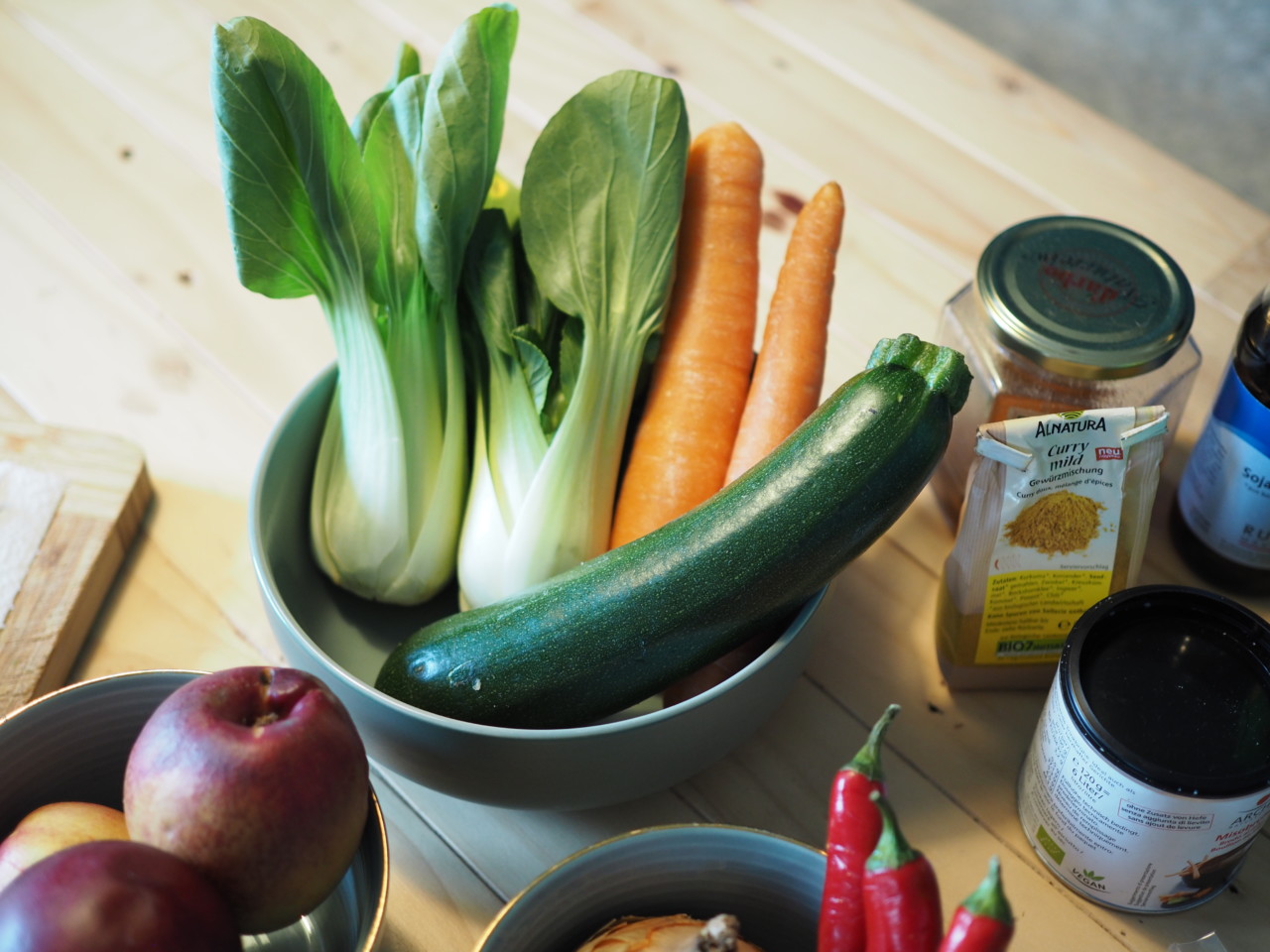

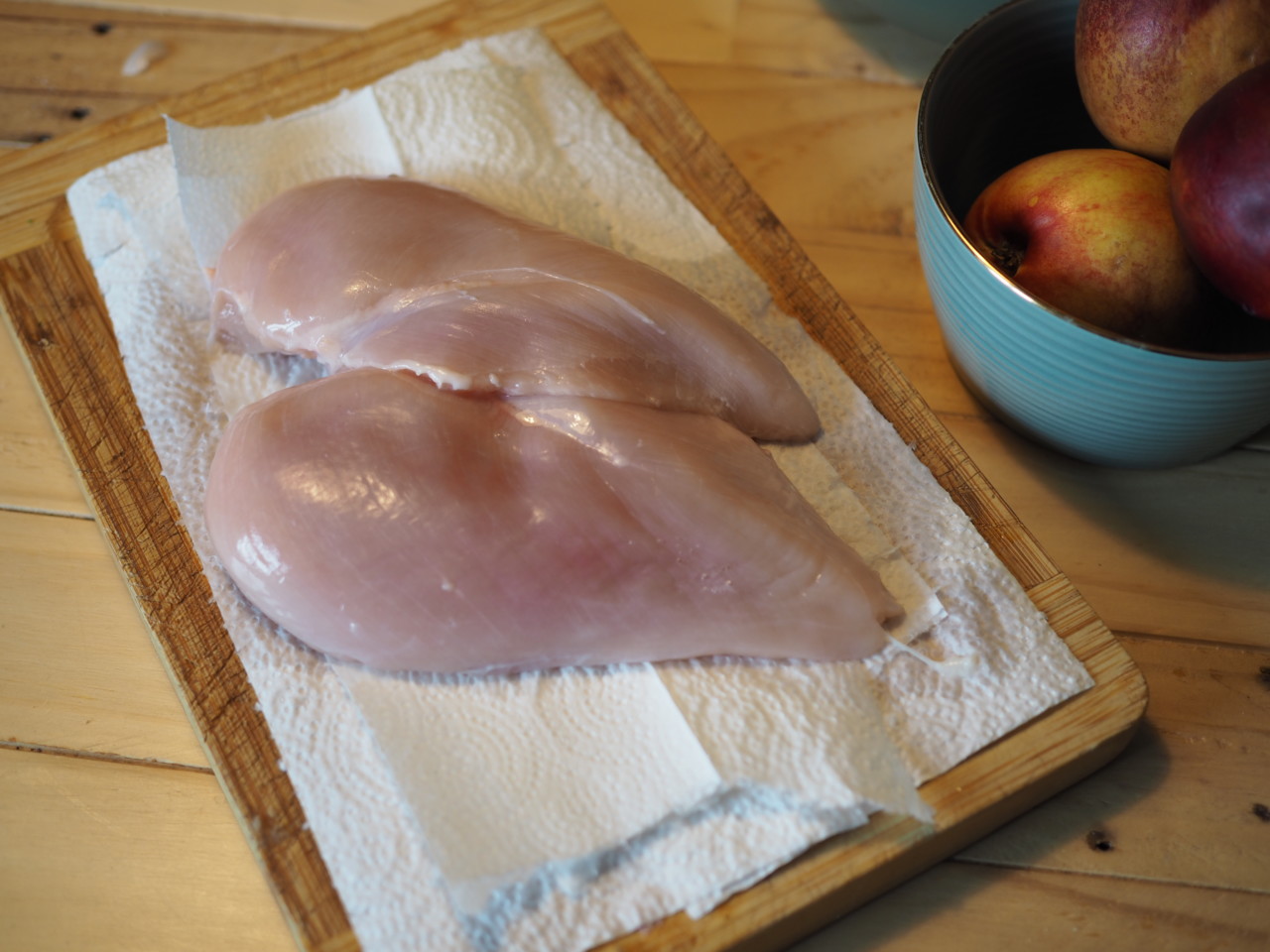
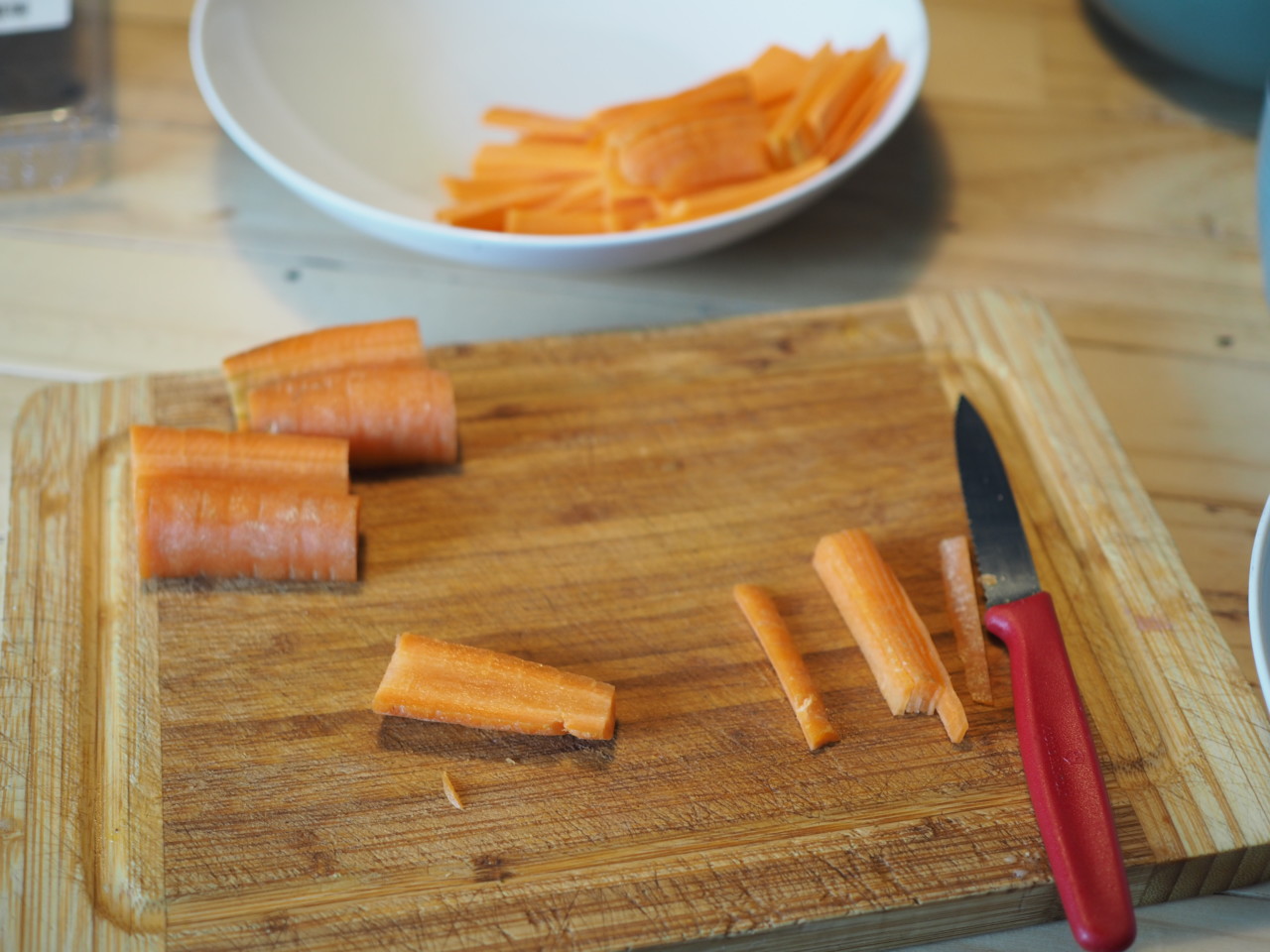
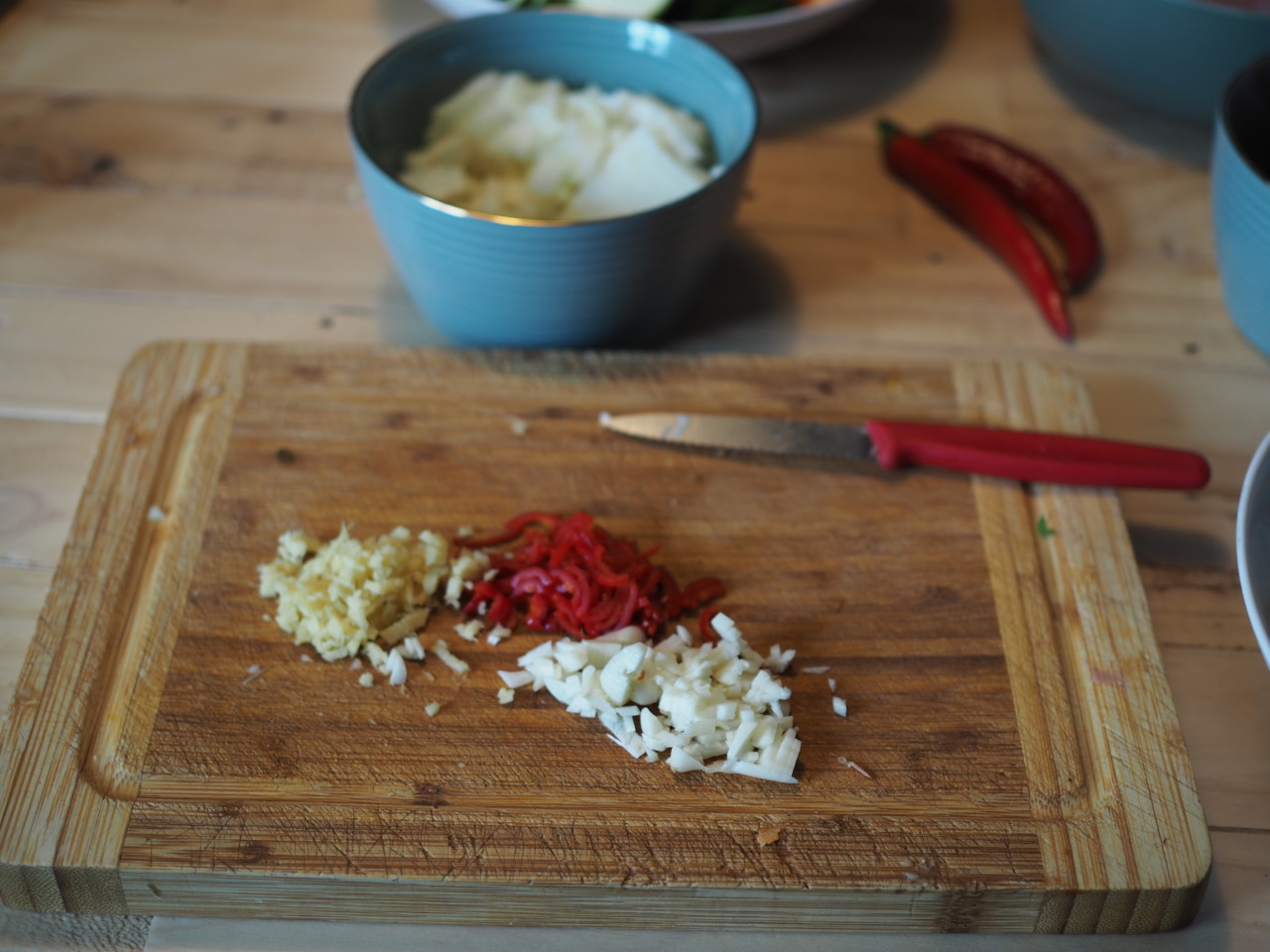
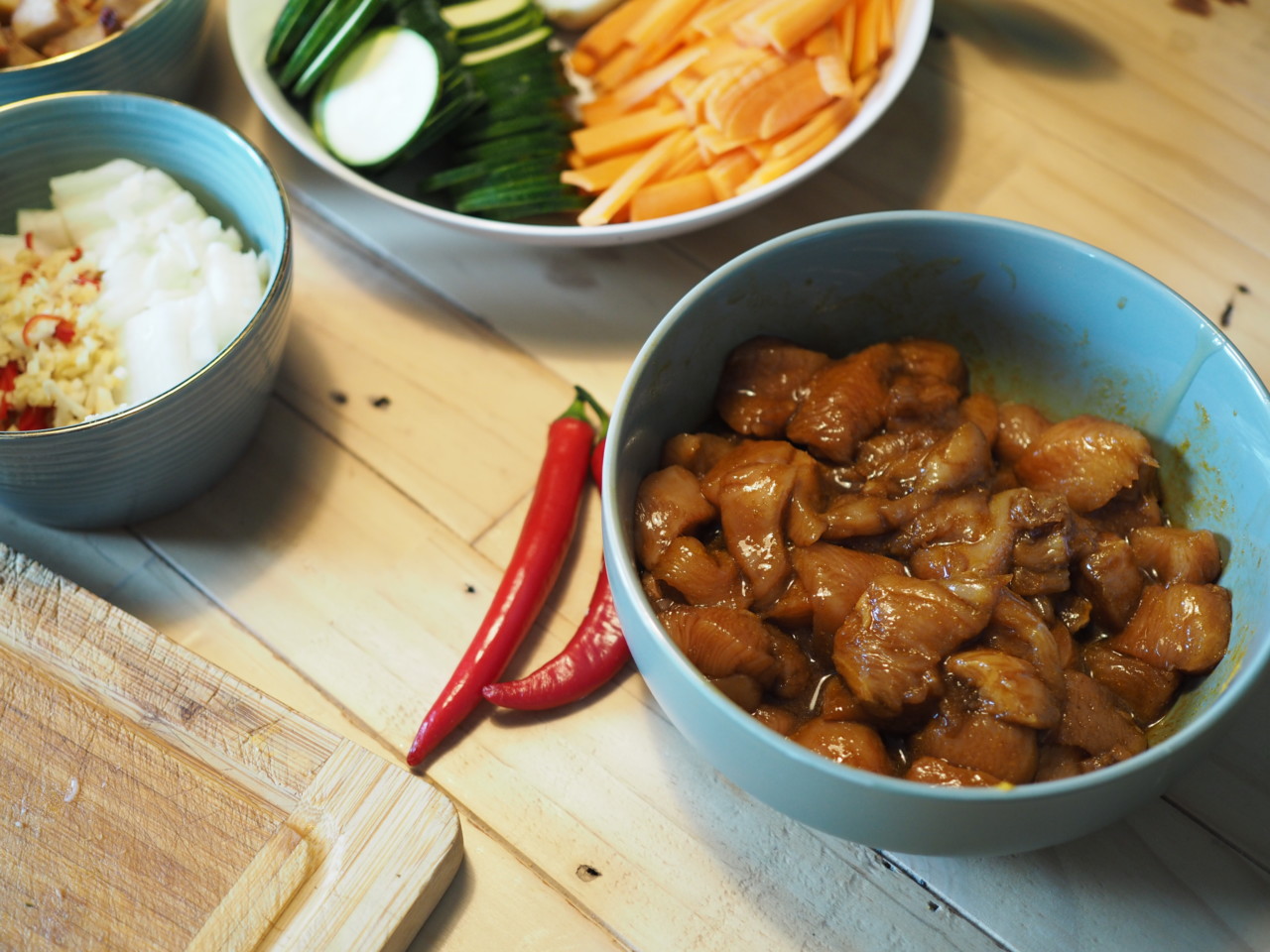
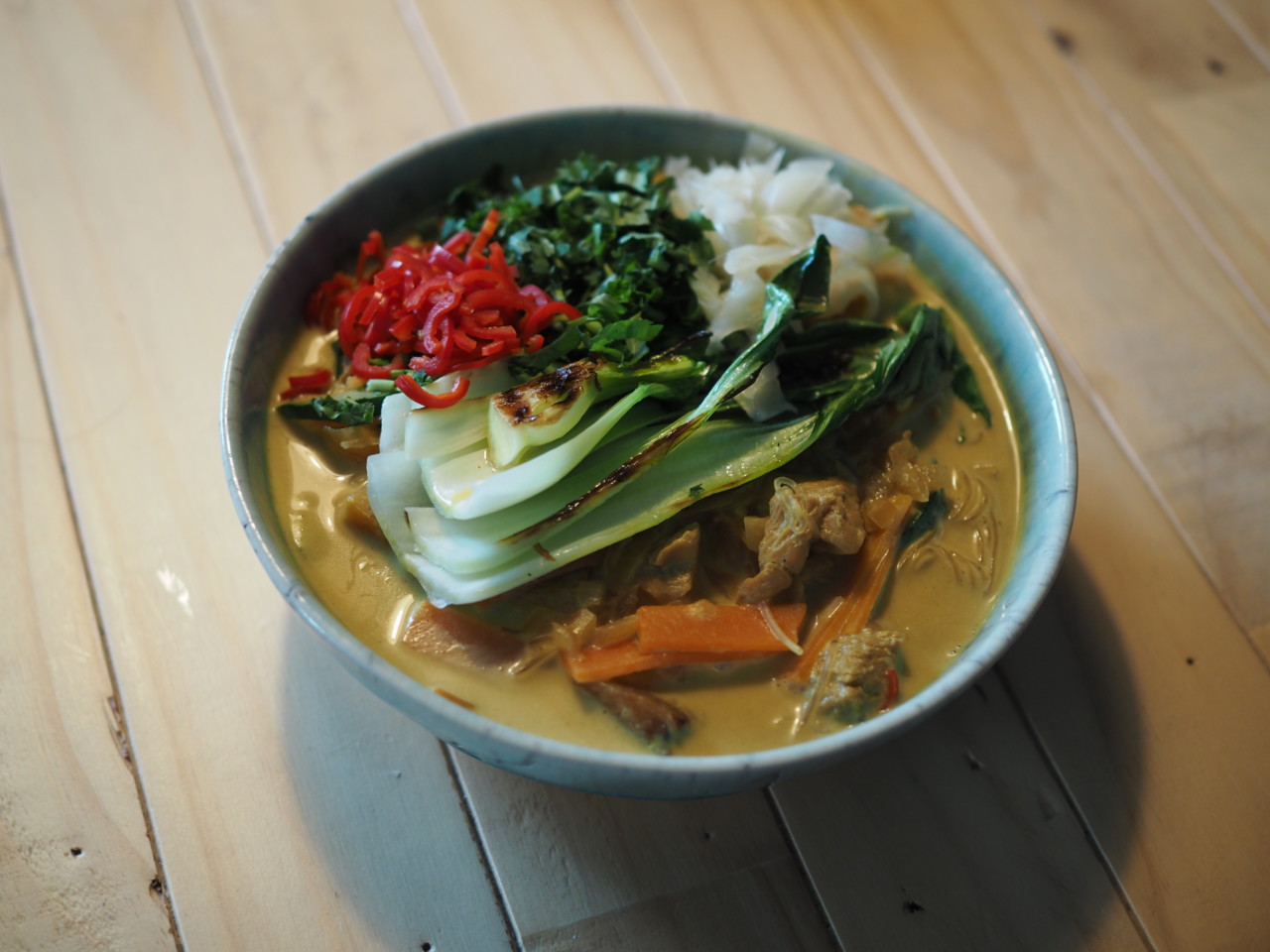




Einen mehr oder weniger lustigen Titel (Baked French Toast = frenglisch) lass ich mir noch einigermassen gefallen.
Aber wenn ein Rezept für Pak Choi, ein chinesisches Gemüse, das im europäischen Süden und neuerdings in der Schweiz angebaut wird, mit einem englischen Text daher kommt, dann verwirrt mich das und ich finde es, sorry, blöd oder peinlich oder beides, falls es bewusst gemacht wurde.
Dass es sich aber vermutlich um einen Fehler oder ein Unglück oder Missgeschick handelt, lässt sich vielleicht daran erkennen, dass der Hinweis ‚Rezept Downloaden‘ (neudeutsch) und ‚Die Zutaten‘ deutsch belassen wurden.
Klar, Anglizismen sind umgangssprachlich zur Normalität geworden. Aber ich brauche keinen Englischkurs oder -test.
Vielleicht ist der Autor der deutschen Sprache nicht mächtig. Der Kulinarik-Blog sollte es sein. Oder ist das ein neues Konzept, oder Verwirrspiel, Rezepte in verschiedenen Sprachen zu publizieren?
Ich freu mich über jede neue Ausgabe und schicke den Lunchgate Kulinarik-Guide oder die Rezepte im Bekannten- und Freundeskreis weiter. Nicht zuletzt, weil er gut gemacht ist und originell, kompetent und frisch daherkommt. Es ist jedesmal ein Aufsteller.
Wie wärs, wenn ihr das Rezept einfach nochmals auf Deutsch publizieren würdet.
Und Danke für das Spargel-Rezept. Das wird grad mal ausprobiert. Macht so weiter (mit obiger Einschränkung)!
Nüt für unguet und freundliche Grüsse
Werner F. Nachtnebel
Guten Tag Werner und danke für dein Input.
Ich verstehe leider nicht was die Herkunft des Gemüses mit der Sprache des Textes zu tun haben soll, und es ist auch kein Missgeschick, dass der Text auf Englisch ist.
Wie du sicher weisst ist die Schweiz ein Internationaler Ort, mit 4 Landessprachen und sehr vielen Expats die Englisch sprechen. Da wir für Inklusivität stehen, haben wir seit neustem angefangen für die Leute die kein Deutsch sprechen Englische Rezepte und Restaurant Reviews zu machen.
Die Idee ist mehr Leute für Essen und Restaurants zu begeistern nicht nur welche die Deutsch sprechen.
Alles Gute wünschen dir Patrick und das Lunchgate Team
Lieber Patrick
Danke für Deinen Erklärungsversuch. Immerhin heisst es jetzt ‚Ingredients‘.
Unter Inklusivität verstehe ich etwas anderes.
Der Lunchgate Newsletter war für mich bisher eine interessante und irgendwie exklusive Insiderpublikation.
Von englisch sprechenden Expats in der Deutschschweiz erwarte ich, dass sie sich so viel Deutsch aneignen um wenigstens Kochrezepte lesen zu können. Dem sagt man Integration.
Und was ist mit all den anderen Sprachgruppen?
Es wäre schade, wenn eure Publikation zu einer Art Studentengastroführer verkommen würde.
Freundlich grüsst
Werner F. Nachtnebel
Lieber Werner,
ich erlaube es mir, hier kurz zu übernehmen. Zuerst einmal danke für deine lobenden Worte – Balsam für mich und mein Team, das jeden Monat daran arbeitet, spannende Inhalte und feine Kreationen für unsere Leser zu produzieren. Aber dass wir seit Neustem auch 1 bis 2 englische Artikel pro Monat publizieren, magst du uns doch bitte nicht verdenken, in Anbetracht dessen, dass wir die restlichen 10 monatlichen Artikel inklusive dem Kulinarik-Guide auf Deutsch versenden. Oder? Ausserdem teile ich deine Angst nicht, dass wir aufgrund einer sprachlichen Offenheit gegenüber der multikulturellen Gesellschaft unseres Landes zu einem Studentengastroführer verkommen – was hat das eine mit dem anderen zu tun? Wir setzen höchste Massstäbe an die Qualität unserer Artikel – sei’s nun auf Englisch oder Deutsch – und das werden wir weiterhin so beibehalten.
So; nun hoffe ich von Herzen, dass du über den (nicht einmal 10-prozentigen) Anteil unserer monatlichen Englisch-Blogposts hinwegsehen kannst, die deutschen umso mehr geniesst und bei Fragen und Unklarheiten zu einem englischen Rezept sonst einfach auf den Autor zurückkommst. Patrick ist ja zum Glück beider Sprachen mächtig – und in beiden Sprachen gleich kompetent.
Liebe Grüsse
Marina
Redaktionsleitung